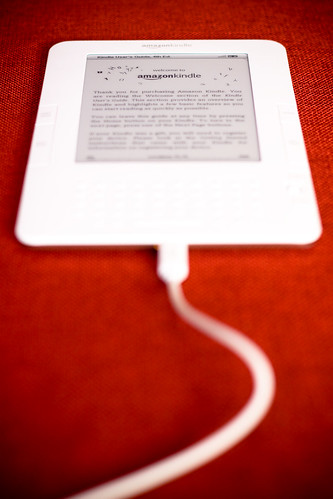On March 29th, Amazon launched two major new services, both of which seem to speak directly to my post guessing at an Amazon Tablet…as well as being shots across the bow of both Apple and the music industry. The two services are connected, but distinct in capabilities and effects, so let’s look at them separately:
The first is Amazon Cloud Drive, Amazon’s answer to other consumer-facing cloud storage similar to Dropbox or Windows SkyDrive. Amazon is giving everyone 5GB of space for free, with the ability to purchase additional storage for $1 per Gigabyte in chunks: 20, 50, 100, 200, 500, or 1000 GB levels are all available. While 5GB free is more than Dropbox’s 2GB, and way less than SkyDrive’s 25Gb, for raw storage in the cloud I still think Dropbox has everything else beat in usability. For Cloud Drive, you have to do all file interactions (uploading/downloading) within your browser, which isn’t as convenient on traditional computers as a locally-mounted drive. There’s no reason that Amazon couldn’t move this direction, however, and release a program that would allow more direct access.
The real killer here isn’t Cloud Drive by itself…it’s the associated Cloud Player and the model that Amazon is using for the connection between the two. Cloud Player is a web-based media player that has access to the files uploaded to your Cloud Drive. That is, if you use your Cloud Drive to hold MP3 or AAC encoded music files, those will be automatically available to Cloud Player, and can be streamed to nearly any browser. Cloud Player has the basic controls that you would expect from a music player, allowing you to view your collections by album, artist, or genre. It also allows you to build or import playlists, shuffle, and repeat songs in the same way that pretty much every music player does.
This means that with Cloud Storage + Cloud Player, I can take my own music, upload it to Amazon, and then listen to it anywhere I have a browser…or on the updated Amazon MP3 for Android app on any Android based phone or tablet. In a brilliant marketing move, Amazon is also letting you automatically cross-load any MP3 that you buy from the Amazon MP3 Store directly to your Cloud Drive…and anything that you buy from them doesn’t count against your storage limits. They are also offering a free upgrade to their 20GB storage level if you just buy any MP3 album from Amazon through the end of 2011. So you can purchase any amount of music from Amazon, and it will all be available for streaming to any computer or directly to your phone if you have an Android handset. For free.
Let’s not forget, this sort of service is exactly what got MP3.com in hot water with the music labels a decade ago (with, admittedly, technical differences). Indeed, Sony has commented to Ars Technica that while they were hopeful they could work with Amazon on a licensing deal that they were “keeping their legal options open.” So it’s almost certain that Amazon will see some form of lawsuit about the service…but my money is on Amazon for this one. They have the pockets that MP3.com didn’t, and have a great case for moving the industry forward if they can pull of a court victory.
This is a huge move by Amazon, and will put the pressure on Apple to respond. There have been rumors about a similar digital-locker server from Apple for years now, and their North Carolina Data Center has been rumored to be a part of Apple gearing up for a cloud-based service since it was announced. Google is also rumored to be getting into this market, with their Google Music service that is reported to be in internal testing now. It’s going to be an interesting year for these services, but Amazon has a compelling vision for Cloud Drive + Cloud Player. I’m excited by it, and really want to get my hands on an Android device so that I can play with the mobile access.


